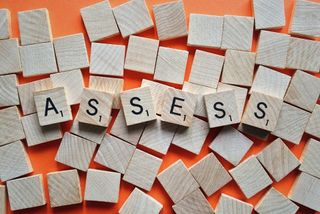Creating deeper learning with better assessments that cut beneath the surface was the topic of a recent Tech & Learning webinar.
The talk was hosted by Dr. Kecia Ray and featured Vivian May, secondary instructional coach at Marion County Public Schools in Kentucky, and Kendell Hunter, a product marketing manager at Otus and a former classroom educator.
The conversation included a discussion of how May’s district revamped its assessment process using modern tech tools in order to foster more learning that delved beneath surface.
Watch the full video of the webinar on demand here.
Key Takeaways
Assessing Assessments
During the pandemic, educators at the Marion County Public Schools realized there was a disconnect between the way students were scoring in their classes and the results they received on statewide assessments. “A lot of our teachers realized that students that were getting A’s [and] B’s in their classes were scoring novice and apprentice on our state assessment,” May said. “So we realized our assessments were not rigorous enough. We were teaching kids, but we were just surface teaching them, and then when we assessed them, we were just surface assessing them.”
Understanding State Standards
To change this, leaders at Marion County Public Schools started a process of deconstructing state standards during professional development days. During these sessions educators:
- Broke down Kentucky standards by identifying the verb, noun, vocabulary, and prerequisites
- Looked at already created assessments to see if the question "matched" the standard.
- Looked at the verbs -- are students displaying the ability to complete the standard?
Asking Questions That Dig Deeper
This process resulted in more robust probing questions of various kinds. At this point technology became a vital part of the process and the district began using Otus to create new assessments. “What we loved about Otus was we can create any type of assessment. We can create a formative, we can create a summative, we can create a rubric,” May said. The questions also do not need to be text-based. “For example, we had a seventh-grade ELA where the standard was wanting them to match a type of media to an article. So I was able to upload a podcast on to Otus and then also uploaded a nonfiction article, and then our students were able to toggle between the two. Then it also has a question, which is very much what our state assessment looks like.”
Processing Assessments Quicker Also Helps Schools Adjust Sooner
Another key to strong assessments discussed during the webinar was speed, and when it comes to that, digital assessments far outpace more traditional methods. “That's really the beauty of a digital assessment,” Hunter said. “All of this data is generated as soon as students submit and what you can do is select an assessment and then view overall how students are performing on any of those standards that were on the assessment. So who's mastering? Who needs support?”
Using Data From Assessments
Of course, how a school uses the data generated by an assessment is key. “Once we created our assessment and made sure that our questions matched our standard, I could go in and I could link a standard to each question,” May said.
Once teachers in Marion County Public Schools have given their assessments, May said that they can explore the data in a number of ways. “I start first looking at just a grade, and then I can filter down to each teacher and then I can filter it down to each period for that teacher. And then and I can filter it down to even demographics.”
All of these data points can help give educators actionable insights about their students that they can use to adjust their teaching and strategies long term to ensure student success.


